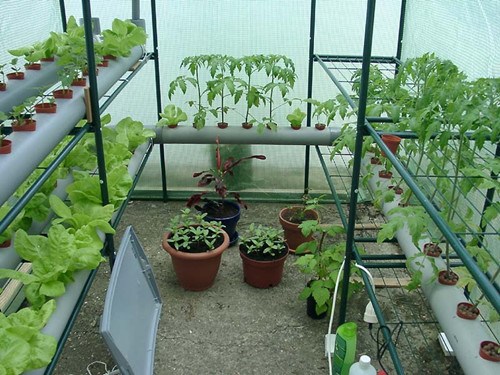San Francisco (CNS) -- As autumn comes, Chen Xiaoyu, a Chinese migrant residing in the Peninsula of the San Francisco Bay Area, is harvesting a colorful garden of tomatoes, peppers, cucumbers, long beans, Chinese celery, chives, and lettuce, as well as fresh fruit trees – lemons, apples, pears, and jujubes.
Employed at a biological company, she was tickled to come up with the idea of planting her own food in the backyard after a visit to her college friend's last year. Now, farming at home has turned into a daily routine and big pleasure of hers.
Her husband, working at a computer company, along with their daughter, was also motivated to join her. They searched the Internet for information on home farming of Chinese vegetables and other species, changed half of the backyard into a vegetable field, and waited for the seeds borrowed from neighbors or bought from groceries to grow.
Delightfully, the little lives survived, and they have supplied the family of three for several years. They sometimes give the food out to neighbors and colleagues. "My daughter suggests that we sell the rest in the market on weekends," Chen told CNS.
Not only vegetables and fruits, but eggs are also self-produced in their backyard. Chen owns five hens, living in the shelter her husband built with boards and iron stands. They are fed with worms and vegetable leaves instead of inorganic feeds.
Like many local families, plenty of Chinese new comers started to grow and eat their own food in their own garden.
A survey released by the American Horticultural Society (AHS) this past June showed a rise in home farming. In 2008, about 30 million American families produced their own vegetables and fruits, spending about 2.4 billion USD in total. Everything from purchasing weeds, soil, fertilizers, and tools, to all the next steps, is done by themselves.
Since 2009, this figure climbed sharply by 24.5% to some 2.99 billion USD and stayed the same last year.
Director Field of AHS attributed the rapid growth to the 2008 economic recession. More American families changed to self-production of food to counter the higher prices and lower incomes.
For Chen's family, who is in fact among the high-income group of the region because of their 20 years of diligence here, home farming is a means to satisfy their own needs and, meanwhile, slow down the fast pace of life.
"When we first came to the States for study, there was a long period of no leisure during our hard study and working periods. Life became boring like two spots on a line. We enjoy ourselves in the urban farming practices. It gives us more chances for physical exercise, and also healthier and safer food.
Though Chen's several-hundred-square-meter house and yard seems unrealistic for most local Chinese, Lin Lin, who is fresh to the working force and has been living in a small apartment since last year, also shares the same form of self-supplied food.
Lin grows tomatoes, cucumbers, green onions, and strawberries in flower pots, and even successfully planted a Chinese toona tree.
"I eat salads made from what I have grown by myself on my balcony, free of worries from any virus or infection. Believe me, the taste is second to none," said Lin in satisfaction.



















